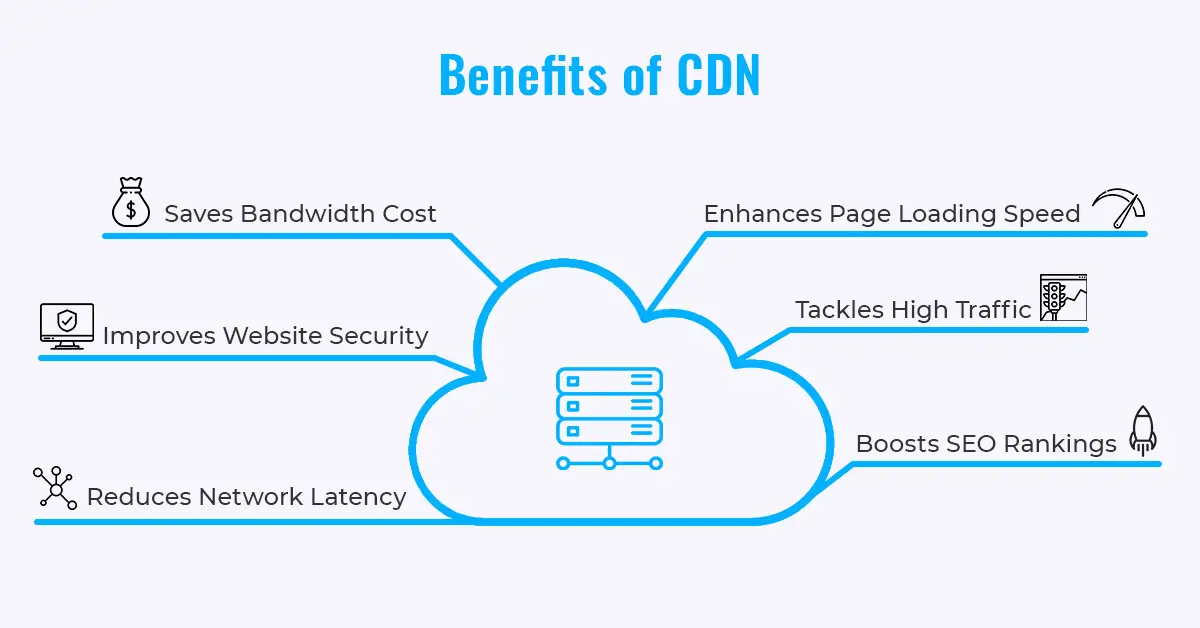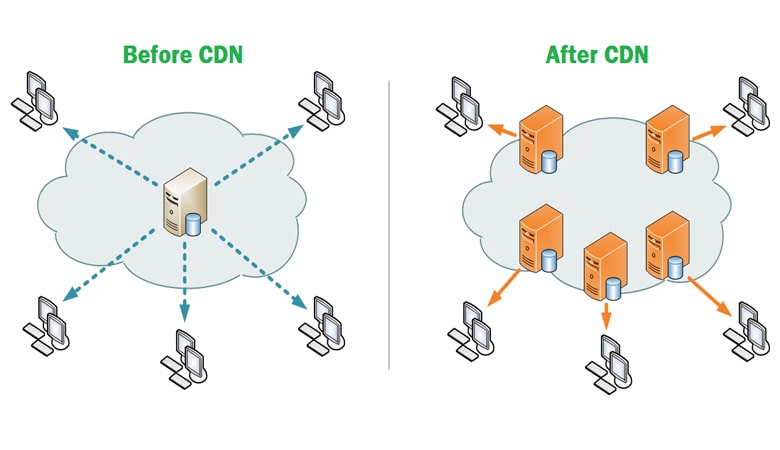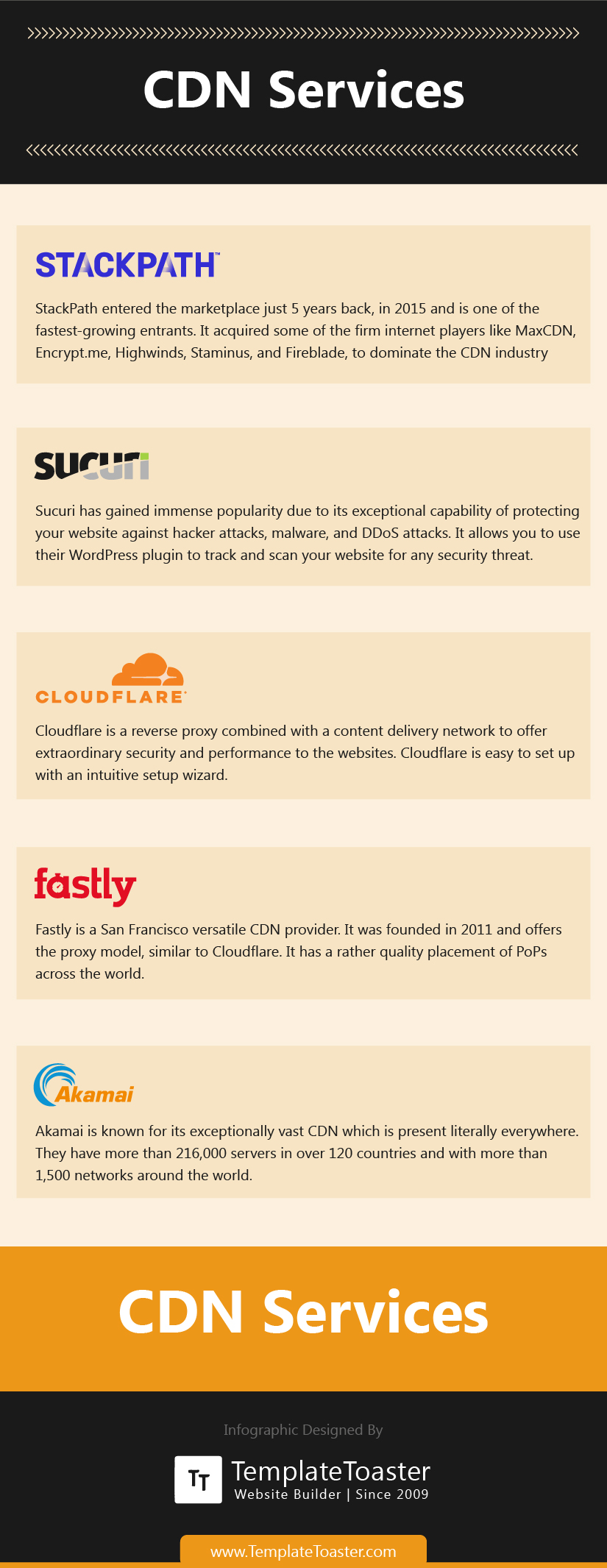Content Delivery Networks (CDNs)

CDNs are distributed networks of servers that deliver content from multiple locations around the world, ensuring faster and more reliable delivery to end-users.

Types of CDN Services

1. Edge-Caching CDN
- Stores cached content on servers located close to end-users.
- Reduces latency and improves page load times by serving content from the nearest cache location.
- Ideal for static content such as images, videos, and HTML files.
2. On-Demand CDN
- Stores content in a cloud-based infrastructure.
- Delivers content dynamically, ensuring that the most up-to-date version is always available.
- Suitable for dynamic content such as live streaming, software updates, and real-time applications.
3. Hybrid CDN
- Combines the benefits of both edge-caching and on-demand CDNs.
- Caches frequently accessed content on edge servers while delivering dynamic content from cloud-based infrastructure.
- Provides the optimal balance between performance and cost.
4. Content-Based CDN
- Analyzes the content of requests and delivers the appropriate version to end-users.
- Optimizes delivery based on factors such as device type, resolution, and user preferences.
- Improves user experience by providing relevant and tailored content.
5. Optimization CDN
- Includes additional features for optimizing content delivery, such as:
- Image and video compression
- Adaptive bitrate streaming
- TLS encryption
- Load balancing
- Enhances performance, security, and scalability.
Benefits of Using a CDN
- Enhanced Performance: Reduced latency, faster page load times, and improved streaming quality.
- Increased Reliability: Content is delivered from multiple locations, reducing the risk of outages.
- Improved Scalability: CDNs can handle large traffic spikes and prevent bottlenecks.
- Cost Optimization: Pay-as-you-go pricing models allow businesses to scale their CDN usage based on their needs.
- Global Reach: CDNs with servers in multiple regions provide content to users worldwide.## Understanding The Different Types Of Cdn Services
Executive Summary
Content Delivery Networks (CDNs) are essential for delivering fast, reliable, and secure online content. This article provides a comprehensive overview of the different types of CDN services available, their benefits, and how to choose the right one for your business.
Introduction
In today’s digital world, speed and reliability are critical for online success. CDNs play a crucial role in optimizing content delivery by caching and distributing it from multiple servers located worldwide. This reduces latency, improves user experience, and enhances website performance.
FAQs
What is a CDN?
A CDN is a network of servers distributed across multiple geographic locations that work together to deliver content to users faster and more efficiently.
How does a CDN work?
CDNs cache content from the origin server (where the content is stored) on their edge servers. When a user requests content, it is served from the nearest edge server, reducing the distance the content has to travel and minimizing latency.
What are the benefits of using a CDN?
- Faster content delivery: Reduced latency improves user experience and website performance.
- Increased reliability: Redundant servers ensure content is always available, even during peak traffic.
- Enhanced security: CDNs protect against DDoS attacks and other security threats.
- Reduced bandwidth costs: By caching content closer to users, CDNs reduce the amount of bandwidth required to deliver content.
Types of CDN Services
Edge-caching CDN
- Description: Caches content on servers located at the edge of the network, close to users.
- Important pieces:
- Global network of edge servers: Ensures fast content delivery from multiple locations.
- High cache hit ratio: Stores frequently requested content for faster delivery.
- Load balancing: Distributes traffic across multiple edge servers to avoid overloaded servers.
- Geolocation support: Optimizes content delivery based on the user’s location.
- IP address lookup: Quickly identifies the user’s nearest edge server for content delivery.
Origin-pull CDN
- Description: Stores content on a single origin server and pulls it to edge servers on demand.
- Important pieces:
- Centralized content storage: Reduces storage costs compared to edge-caching CDNs.
- Optimized cache management: Ensures content is only cached on edge servers where it is likely to be requested.
- Dynamic content support: Delivers dynamic content without the need for caching.
- Reduced traffic costs: Only pulls content to edge servers when necessary, saving on bandwidth.
- Flexible content distribution: Allows for customized content delivery rules based on specific user segments or content types.
Peer-to-peer (P2P) CDN
- Description: Uses the devices of CDN users to cache and distribute content.
- Important pieces:
- Decentralized content storage: Content is stored on multiple user devices, providing high availability.
- User-based caching: Reduces the load on origin servers and improves content delivery speed.
- Block-level caching: Caches small blocks of content, allowing for segmented content delivery.
- Swarm optimization: Coordinates content delivery between multiple users to improve performance.
- Security concerns: May require additional security measures to protect against malicious content distribution.
Real-time CDN
- Description: Delivers live streaming and other real-time content over the internet.
- Important pieces:
- Low latency streaming: Minimizes delays in content delivery, ensuring a smooth user experience.
- Adaptive bitrate streaming: Adjusts the bitrate of the content based on the user’s network conditions.
- Multicast support: Efficiently transmits content to multiple users simultaneously.
- Edge caching: Caches real-time content on edge servers for faster delivery.
- Reliable delivery: Uses error correction and redundancy techniques to ensure seamless content transmission.
Hybrid CDN
- Description: Combines multiple types of CDN services to optimize content delivery.
- Important pieces:
- Customizable architecture: Allows businesses to tailor the CDN to their specific requirements.
- Hybrid caching: Uses both edge-caching and origin-pull techniques for optimal content delivery.
- Failover and load balancing: Ensures content is always available, even in the event of a server failure or high traffic.
- Security optimization: Provides enhanced security features such as DDoS protection and SSL encryption.
- Cost efficiency: Optimizes content delivery costs by combining different CDN types.
Conclusion
Choosing the right CDN service is crucial for optimizing website performance and delivering a superior user experience. By understanding the different types of CDN services available, businesses can make an informed decision that meets their specific requirements. Edge-caching CDNs offer fast content delivery, while origin-pull CDNs provide centralized content storage. P2P CDNs leverage user devices for caching, real-time CDNs ensure smooth streaming, and hybrid CDNs offer customizable architectures for optimal performance.
Keyword Tags
- CDN services
- Content delivery network
- Edge-caching CDN
- Origin-pull CDN
- Real-time CDN
